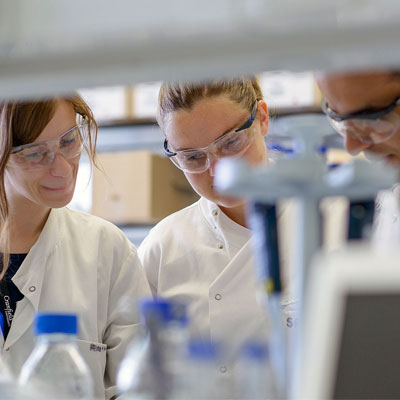We have established a strong global reputation in safety, resilience, risk and reliability with over 60 years of research.
We work with organisations and government bodies all over the world to manage safety and risk. Our client base is international and we have considerable experience working with boards, executive managers and group risk managers. Our holistic approach and expertise can be applied to all types of businesses.
Examples of clients we have worked with include:- Aviation – European Aviation Safety Agency, Airbus and Thomson Airways
- Driver Safety - Balfour Beatty, Unilever and Shell
- Emergency Services – Luton and Bedfordshire Combined Fire Service
- Energy – E.ON, Centrica and Statoil
- Hospitals – Addenbrookes and Broadmoor
- Rail – Hong Kong Mass Transit Railway and Rail Accident Investigation Branch
- Marine – European Maritime Safety Agency and Japanese Maritime Accident Inquiry Association
- Water – Yorkshire Water, South Australia Water, Calgary Water Services and US Water Research Foundation
- Biotechnology & Biological Sciences Research Council (BBSRC)
- Department for Business, Innovation & Skills (BIS)
- Department for Environment, Food and Rural Affairs (Defra)
- Department of Energy and Climate Change (DECC)
- Economic and Social Research Council (ESRC)
- Engineering and Physical Sciences Research Council (EPSRC)
- Environment Agency
- Institution of Occupational Safety and Health (IOSH)
- Ministry of Defence (MoD)
- Natural Environment Research Council (NERC)
- Nuclear Decommissioning Authority
- World Health Organisation (WHO)
Working with us
Pulling together the human, technical and organisational aspects of safety and risk management is our core strength.
Consultancy solutions we offer are practical and business-focused with many of our academic experts joining us from industry. Typical services we can provide include:
• Feasibility and optimisation studies
• Development of decision tools, models and techniques for quantitative and qualitative analysis e.g. corporate risk management
• Business diagnostics and recommendations
• Development of risk management frameworks for benchmarking e.g. high reliability organisations
• Technical support for specific events such as accident investigations.
Safety, resilience, risk and reliability are integral themes within our teaching and research. Our Masters degrees include both individual and group projects exploring reliability and safety issues. These are often sponsored by industry for completion by our postgraduate student community, including longer-term PhD projects.
About our research
Our capability in this area spans across all of our major sectors with applications in:
Safety
• Accident investigation in aviation, marine and rail
• Safety management systems
• Driver safety and human factors
• Patient safety in healthcare
• Safety compliance such as airworthiness
• Safety leadership in both high and low hazard environments
• Structural safety including damage tolerance, loading, fatigue and fracture.
Resilience
Preparation and response to shock/change related to:
• Organisations and networks (such as supply chains)
• Systems and their vulnerabilities
• Structures, components and materials
• Damage tolerance and asset health
• Individual resilience, sensemaking and mindfulness.
Risk
• All aspects of qualitative, quantitative and integrated risk management
• Risk analysis, management, communication and governance
• Environmental risk analysis and management
• Risk management in government, including adaptation and resilience
• Risk management maturity modelling and benchmarking
• Corporate and business risk governance, including the Board and executive agenda on risk governance
• Risk, scenarios and futures – tools and organisational strategies
• Geopolitical risk
• Implementing change following crises
• Tools for predicting and reducing human error
• Modelling complex systems
• Mapping and analysing risk networks
• Risk and crisis communication.
Reliability
• Potential failure and fatigue of structures such as in aerospace, automotive and energy
• Damage tolerance
• Reliability engineering with full complement of statistical tools
• Asset condition assessment and expert elicitation related to risk appraisal
• Risk-based maintenance – tools and organisational strategy
• Maintenance and lifecycle management
• High Reliability Organisations (HRO) establishing safety culture and behaviours.
Facilities and resources
Notable facilities we have at our disposal for teaching and research include:
Accident investigation laboratory – a unique facility, featuring wreckage from aviation, rail and marine accidents and a formal classroom environment to facilitate a synergy between the theory and practice of effective safety and accident investigation training. Full-scale accident simulations are also run on the University’s airport.
Structural integrity laboratory – this is the best equipped facility of its kind within a UK higher education institution. The laboratory specialises in the testing of non standard specimens and components, development of fatigue design rules, acceptance testing and inspection reliability trials.
Cabin evacuation simulators – used to conduct research into various aspects of air cabin safety. Research trials can be filmed using a range of video recording equipment, and cameras can be located as required. Video footage can be taken in conditions of darkness using infra-red lighting and IR sensitive cameras. Thermal imaging cameras can be used to obtain footage where non-toxic smoke has been introduced into the cabin. A video editing suite is also available, with time-coding equipment, to analyse research footage.
Flight deck simulators – used for teaching and research into the human machine interface. A large B747-type simulator with visuals is complemented by a B737NG procedural simulator.
Accident site imagery – a combination of state-of-the-art laser site scanner, arm based scanner and photography is used to create high quality walk-through visuals of accident sites allowing use in investigation and training. The technology is deployable to accident sites as an on-call resource.
Centre for Environmental Risks and Futures – provides decision science and analytics support for Government and industry, with specific skills in long-term horizon scanning, scenario development and futures analysis. We have specialist, bespoke and commercial decision tools for quantifying and appraising environmental risks and their uncertainties in the short, medium and long-term. We also have access to additional GIS and remote-sensing tools that provide spatial and temporal visualisation of environmental risk at various scales.
Software – in addition to the tools we develop in-house, we have access to industry-standard packages including @Risk and SPSS.
